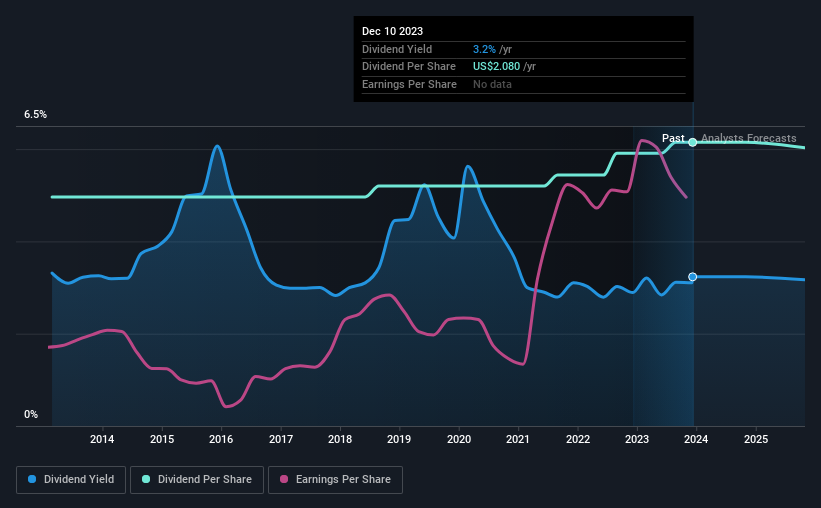Is It Smart To Buy Greif, Inc. (NYSE:GEF) Before It Goes Ex-Dividend?
Greif, Inc. (NYSE:GEF) stock is about to trade ex-dividend in four days. The ex-dividend date occurs one day before the record date which is the day on which shareholders need to be on the company's books in order to receive a dividend. The ex-dividend date is important as the process of settlement involves two full business days. So if you miss that date, you would not show up on the company's books on the record date. Thus, you can purchase Greif's shares before the 15th of December in order to receive the dividend, which the company will pay on the 1st of January.
The company's next dividend payment will be US$0.52 per share, on the back of last year when the company paid a total of US$2.08 to shareholders. Based on the last year's worth of payments, Greif has a trailing yield of 3.2% on the current stock price of $64.36. If you buy this business for its dividend, you should have an idea of whether Greif's dividend is reliable and sustainable. That's why we should always check whether the dividend payments appear sustainable, and if the company is growing.
View our latest analysis for Greif
Dividends are typically paid out of company income, so if a company pays out more than it earned, its dividend is usually at a higher risk of being cut. Greif paid out a comfortable 27% of its profit last year. A useful secondary check can be to evaluate whether Greif generated enough free cash flow to afford its dividend. It distributed 27% of its free cash flow as dividends, a comfortable payout level for most companies.
It's positive to see that Greif's dividend is covered by both profits and cash flow, since this is generally a sign that the dividend is sustainable, and a lower payout ratio usually suggests a greater margin of safety before the dividend gets cut.
Click here to see the company's payout ratio, plus analyst estimates of its future dividends.
Have Earnings And Dividends Been Growing?
Stocks in companies that generate sustainable earnings growth often make the best dividend prospects, as it is easier to lift the dividend when earnings are rising. If earnings decline and the company is forced to cut its dividend, investors could watch the value of their investment go up in smoke. Fortunately for readers, Greif's earnings per share have been growing at 12% a year for the past five years. The company has managed to grow earnings at a rapid rate, while reinvesting most of the profits within the business. This will make it easier to fund future growth efforts and we think this is an attractive combination - plus the dividend can always be increased later.
Many investors will assess a company's dividend performance by evaluating how much the dividend payments have changed over time. Since the start of our data, 10 years ago, Greif has lifted its dividend by approximately 2.2% a year on average. It's good to see both earnings and the dividend have improved - although the former has been rising much quicker than the latter, possibly due to the company reinvesting more of its profits in growth.
Final Takeaway
Should investors buy Greif for the upcoming dividend? Greif has been growing earnings at a rapid rate, and has a conservatively low payout ratio, implying that it is reinvesting heavily in its business; a sterling combination. There's a lot to like about Greif, and we would prioritise taking a closer look at it.
While it's tempting to invest in Greif for the dividends alone, you should always be mindful of the risks involved. For example, we've found 2 warning signs for Greif (1 is a bit concerning!) that deserve your attention before investing in the shares.
A common investing mistake is buying the first interesting stock you see. Here you can find a full list of high-yield dividend stocks.
Have feedback on this article? Concerned about the content? Get in touch with us directly. Alternatively, email editorial-team (at) simplywallst.com.
This article by Simply Wall St is general in nature. We provide commentary based on historical data and analyst forecasts only using an unbiased methodology and our articles are not intended to be financial advice. It does not constitute a recommendation to buy or sell any stock, and does not take account of your objectives, or your financial situation. We aim to bring you long-term focused analysis driven by fundamental data. Note that our analysis may not factor in the latest price-sensitive company announcements or qualitative material. Simply Wall St has no position in any stocks mentioned.

